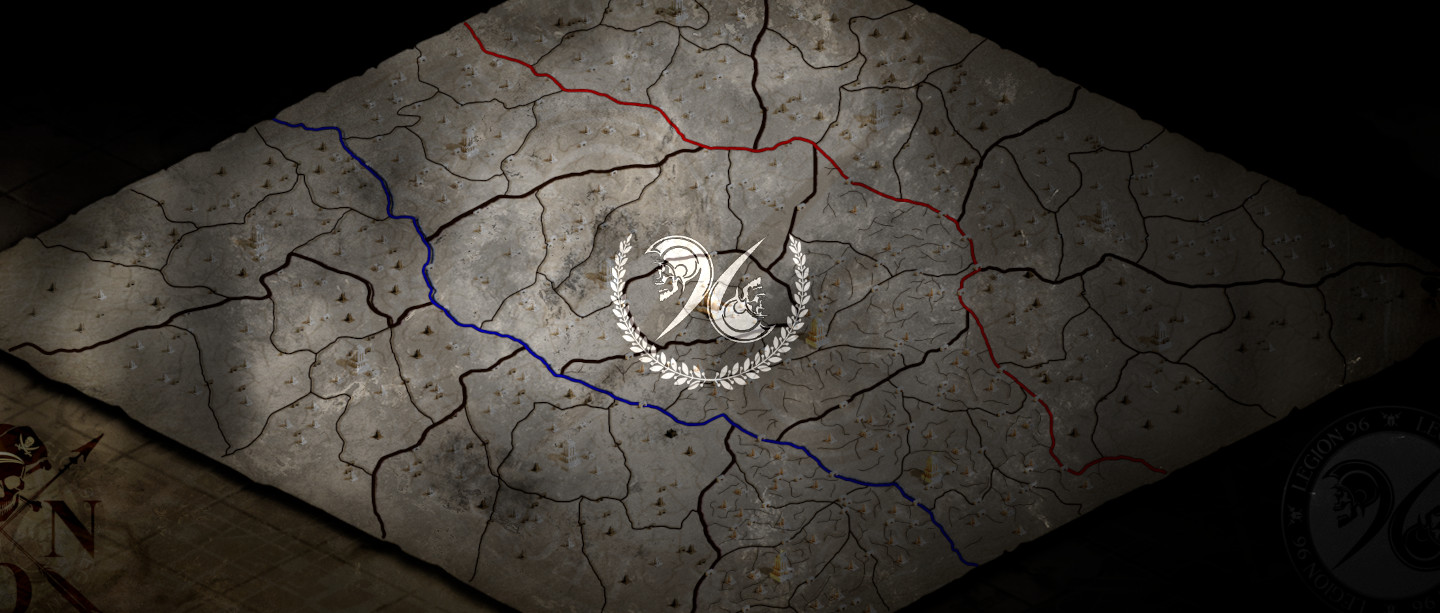

By Don
19th October 2021
05
251
A brief guide of Reign of Chaos planning
Reign of Chaos (ROC) and Eden are probably the main events in the game. Clash of province (COP), due to its recurrence, ends up being more present, but the difference in the award is extremely impactful in the life of a player and in the longevity of a state.
This is a very extensive topic and is probably the most important in the game.
Reign of Chaos is made up of 3 seasons (actually four, but apparently the fourth has already become Eden). In it you will have to defend your base from enemy attacks, building long fields of "tiles", which will be explained later, and, at the same time, try to destroy the enemy base in another state.
Each season brings news: new heroes, new features and probably a new political escalation that who has more friends, has better prizes. This last part is more boring and I was never good at it.
Since the ROC theme is complicated, I will try to address explanations by season, that the mechanism is more complex in each one.
I will probably take the R5 / R4 optics as a reference. If any point is not clear enough, you can ask in the comments.
Seasons
In season 1, in general, everyone is very new and few really understand the importance and complexity of the event. Although the heroes are not very good (3 out of 9 is useful), the opportunity to evolve your points of expertise (a topic that cannot be addressed here, is quite extensive too) should not be thrown away.
In season 2 the destroyer shout is implemented, an ability that can be launched by the guardian of the alliance. This ability allows the caster to open a 5x5 free floor hole within the enemy complex. This allows him to place a rally point and three more castles, at least, in an extremely advanced position, allowing quick access to the enemy base. This skill is a game changer. A team that has a powerful player, willing to assume that position, will have a huge advantage in combat.
In season 3 there is the implementation of the garrison base. It is a structure that has a number of applications, hated and loved by many players.
In season 4, for what would be usual, there would be no implementation of anything new, but recently it ceased to exist and was transformed into the first Eden, which ends up not having the same application as this specific post on ROC.
Pre-Season - Planning
The highest priority, once the ROC is announced, is to try to dialogue with the leaders of your state and to try to define a model of cooperation. Cooperation within the state itself is mandatory, if you don't have it you can quit, you will be run over.
Some states choose to join some more active and strong players into a single alliance, which is a complex decision. Others, for the most part, agree on collaboration, which will lead to the creation of defense complexes.
Defense complexes are formed in the extreme corners of the map, where you will have to decide between each other which the alliance will be in each position. The reason they stay in the extreme corners is simply not to defend against attacks from different sides.
When choosing the position of your alliance centers, it is important that they are never close. In the illustration below I highlighted some areas that are valid for the construction of AC1, AC2, AC3 AND AC4, from outside to inside. Note that highlight some squares in bold. The idea is to exemplify an allocation, in which the alliance centers are positioned far from each other, the opposite extreme, but always in the most internal possible position allowed for that AC.
The only reason for doing this is to prevent the enemy from easily making their way, for example, from the AC2 region directly to your AC3, without having to create another access point.
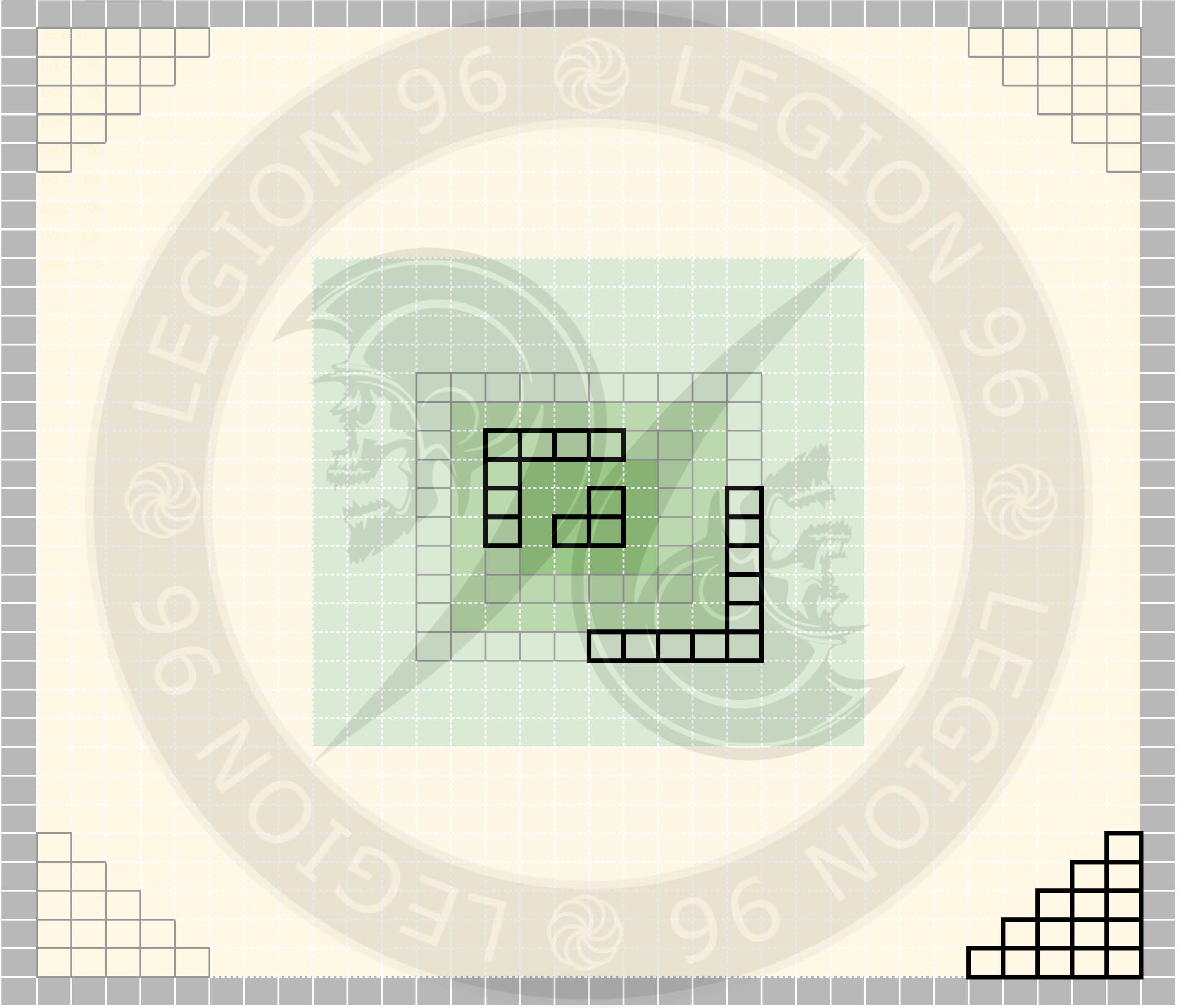
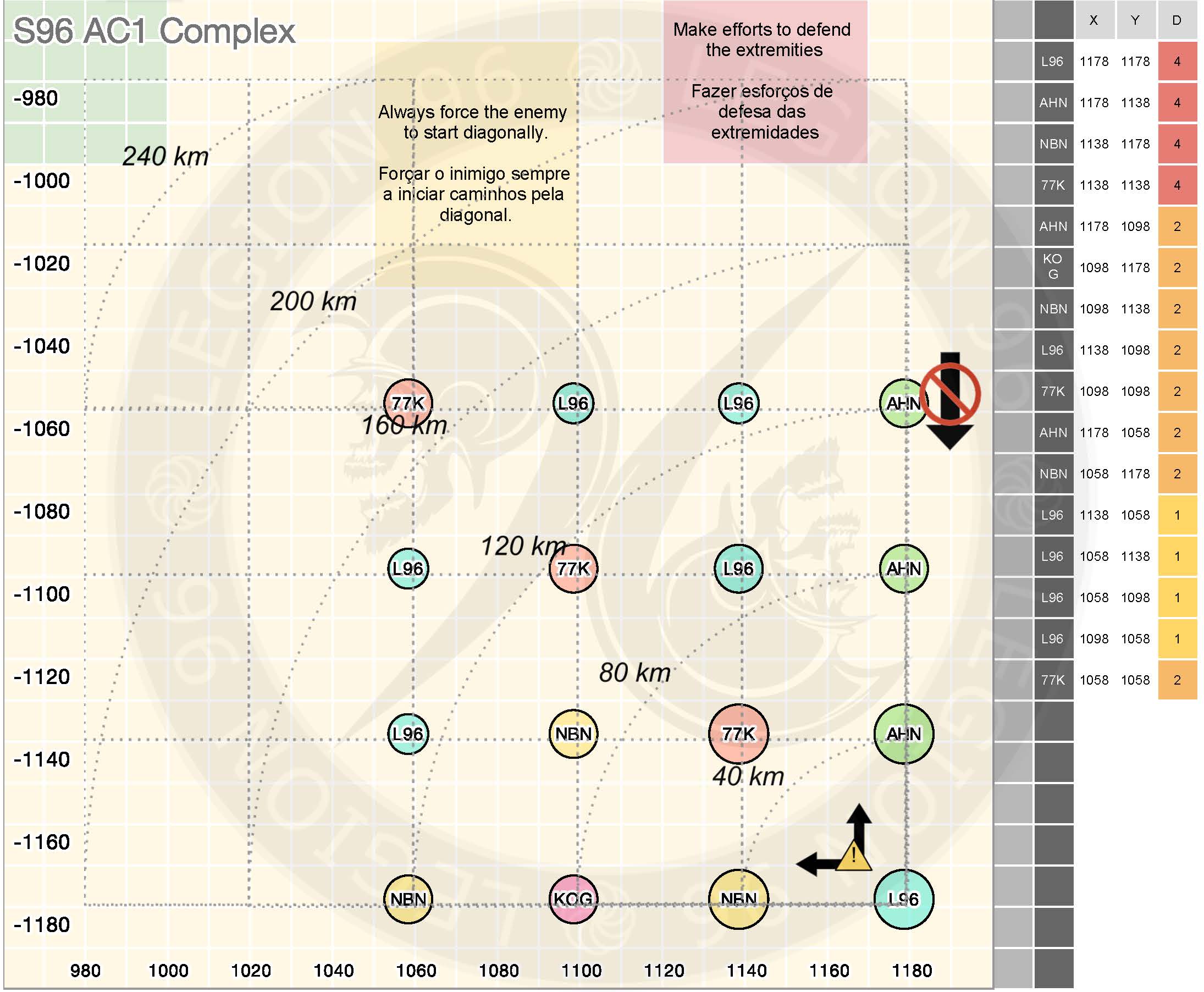
So it is important that the vast majority of players' floors/tiles, in their main castles, are dedicated to resource production, while farm tiles are dedicated to protection.
In season 1 the only way for your enemy to attack your base is to make a tiled bridge to your structures. Because of this, very large defense complexes are basically insurmountable, and this forces your opponents to try to make their way to your AC2. Both the attack and the defense of AC2 is expensive in season 1, since few players have a full zone celebration, but in general it basically consists of teleporting castles to the path of enemy attacks and having, at your disposal, some floors of your alliance , or their farms, nearby to clean up enemies.
From the second season onwards, the firepower of the players becomes very relevant, since the implementation of the destroyer brings new limits to the game and slightly decreases the relevance of gigantic complexes, but these are still very important.
First week - Preparation
During the first week of the ROC there will be no battles. It is your opportunity to build your defensive complex with your allies, allocate your buildings according to the planned layout and build a powerful tile grid for the protection of you and your state.
But wait ... Layout?
Yes, in addition to the systematic allocation of the center of the alliance, it is very important to plan the buildings so that there is an appropriate layout so that you can defend your base.
There is no perfect layout. You need to think of one that suits your players and the level of collaboration you will have with your neighbors.
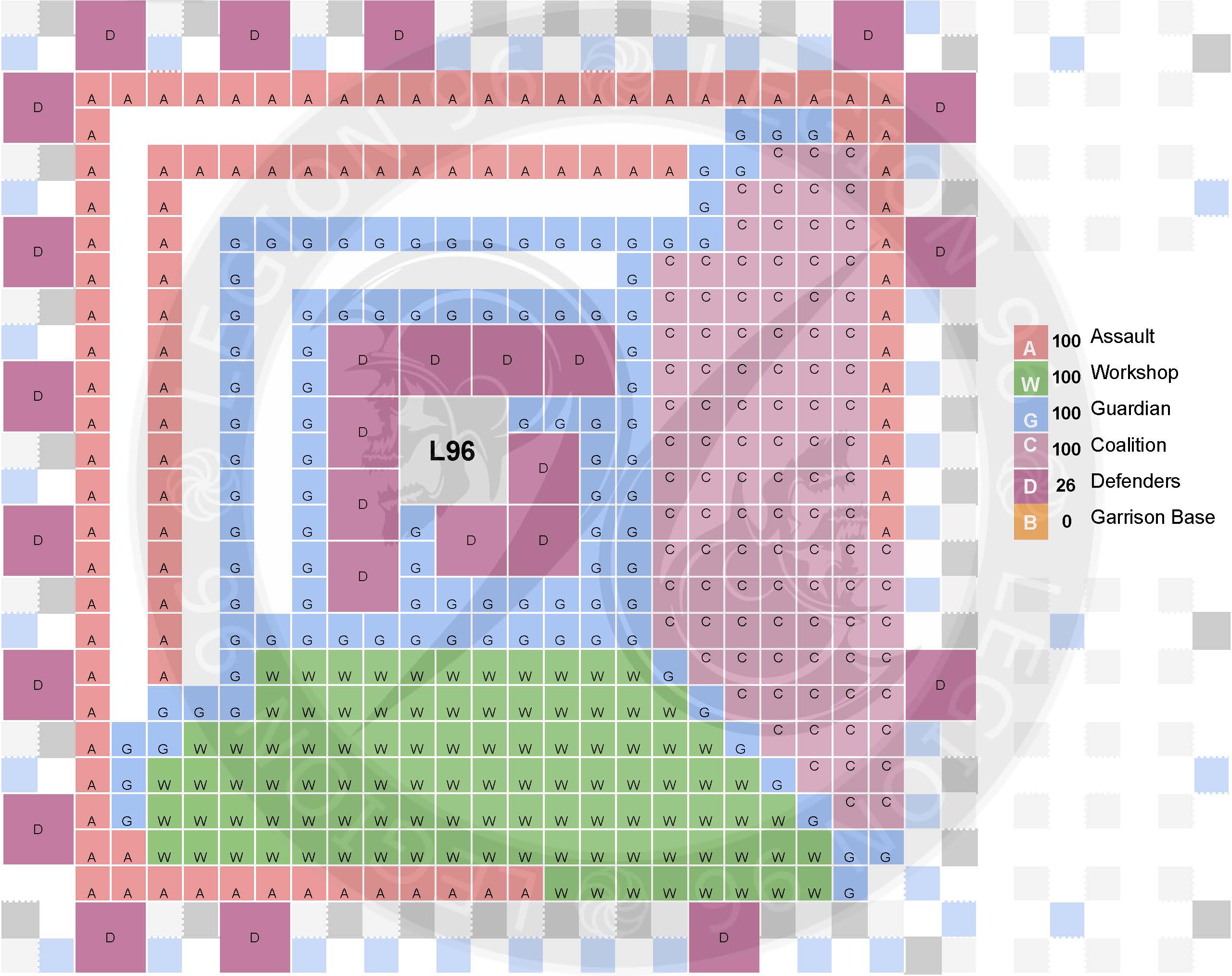
Apparently the alliance overseer is now able to move the buildings and fix the layout. Since I didn't play ROC anymore after this information reached me, here's the tip for you to test and give me feedback.
The form you compose must take into account that: coalition camps are very resistant structures, but they are also extremely important, placing them as the main form of defense of your alliance can give you a false sense of security and, in the event of an offensive that is successful from your opponent, your members can lose up to 2,000 loyalty points, which can fatally incapacitate you from attacking the enemy AC3 and AC4.
Contamination situations may occur in your state that force you to play without one or more of your alliance centers, in which case the protection of coalition camps on your AC1 becomes even more critical.
One question you should ask: But Don, how the hell are you going to leave more than 20 castles in defense? Since you have all of your 100 members building your buildings, did you have any inactive members?
So, let me share my experience: we had inactive members, very few, they were usually removed and I put one of the secondary castles in their place.
And the 26 defenders? The excessive number of castles in the defense is due to the farms, which we used to protect our base and our allies. Less than half were main castles, most were farm. Almost all defense players had more then 1 castle, some had 4 at same time. Farms at ROC have a huge number of applications and maybe I will open a specific topic to talk about it.
Of course, the allocation made of defenders on this ilustration is hypothetical and there is no reason for the format, I used it to illustrate that we could have no defenders on either side or a wall of defenders, so don’t cling to the 26 defenders or the form they’re allocated to, is illustrative.
Those farms that participate directly in the combat must be prepared with anti-missiles. Without them, you will easily have it being zeroed. For that they need to be above level 19 and the anti missile at level 10.
Everything in ROC revolves around activity. It is not possible to have a good campaign if you do not have active members who are minimally able to follow some instructions.
In the week of preparation, one of the most tiring activities is tiling with farms. This activity is tiring, requires infinite collaboration and a lot of patience. Every player in your alliance must contribute to this coverage, it is important for you and your state. Any farm is capable of covering this. For a long time I used level 13 farms to make this network, so there is no excuse.
The way you allocate your farm tiles to protect your base makes a huge difference in efficiency. In the first week of ROC your farms will have just over 30 floors each before the first fight. If you notice, the layout of the floors can give you an opportunity to cover a 300% larger area with the same number of floors.
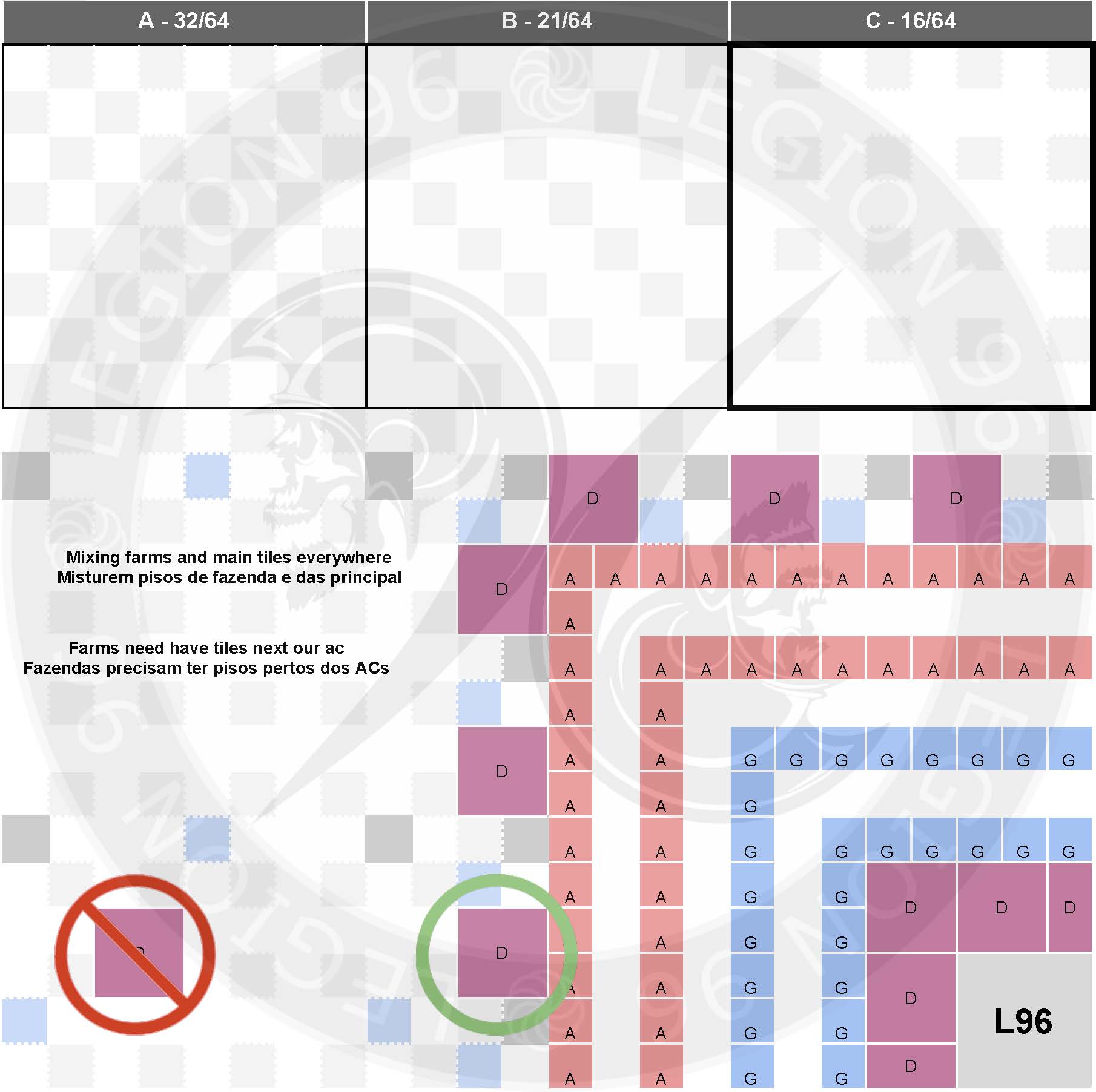
The floor layout model is very relevant, from model A above to model C there is a difference in efficiency of 100%. This allows the network's coverage area to be extremely larger, which in the end is one of the most important things.
I will edit this topic later to continue, I already wrote too much today.

